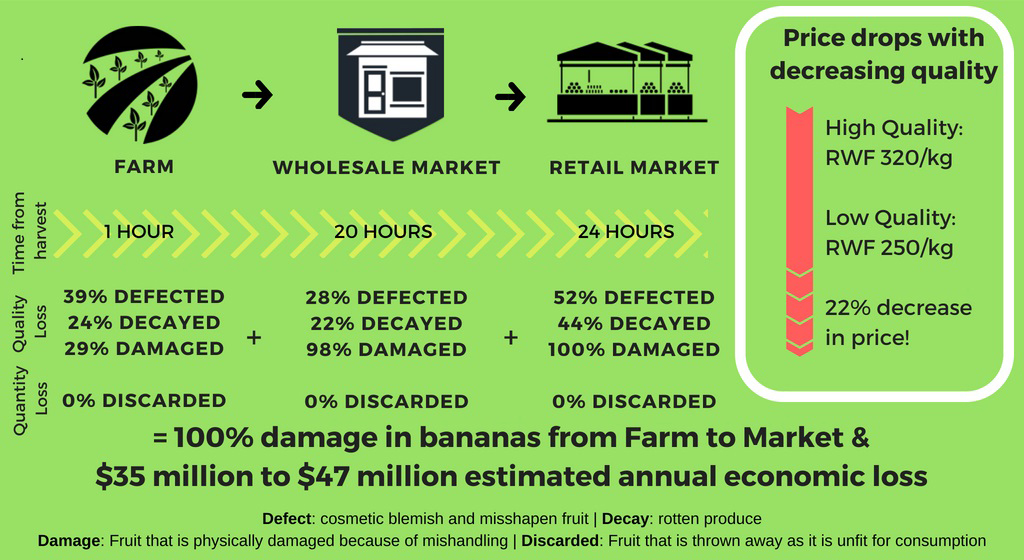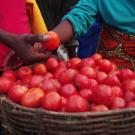This report and policy brief were created by the Horticulture Innovation Lab's project focused on reducing postharvest losses in Rwanda. Through postharvest innovations and interventions, this project works to help farmers and agribusiness enterprises gain better return on investments by adopting appropriate technology and reducing postharvest losses.

Summary of banana losses in Rwanda
Bananas are a main staple crop in Rwanda, with widespread cultivation, consumption and cultural acceptance. An estimated 80% of smallholders grow bananas and they play an important role in household food security, as 90% of the population consumes green bananas as a staple food. After beans, bananas of all types were the most important crop in Rwanda, in terms of hectares under production.
There are three different kinds of bananas in Rwanda. The percentage of cooking bananas (green bananas) produced in Rwanda is approximately 22-30 percent of the annual total, with beer bananas being 64-65 percent, and dessert bananas accounting for 6-10 percent annually. This report focuses on cooking (green) bananas, but there is definite overlap in the production and distribution, with other varieties, particularly the brewing banana.
Key challenges in the cooking banana segment include disease, perishability and cost of transport. Postharvest in general was less of an issue for this crop than for the others, though potential for collection centers and / or centralized storage options may exist.
Recommendations for bananas for the Postharvest Training and Services Centers in Rwanda include supporting lead farmers; helping them to achieve a forward position in the marketing chain; and working with existing large-scale processors on their supply needs.
To understand the postharvest losses in the green bananas value chain, the project conducted three types of analysis – Value Chain Analysis, Commodity Systems Assessment Methodology (CSAM) and Environmental Lifecycle Analysis.
Summary of postharvest losses and quality problems for the crop
- Farmer knowledge: Harvesting practices are rough and cause damage to the produce
- Temperature management: Bananas are exposed to the sun during transport and marketing, and there are no cold chains or cool storage facilities for bananas, Transportation
- Transportation: Cooking bananas are transported as bunches, and are handled roughly, leading to various losses along the chain. Bicycles and trucks are overloaded for the transport of produce for long distances.
- Farmer organization: Farmer cooperatives are not properly organized, which has led to lack of bargaining power for selling their produce to traders
- Processing: There are limited processing options for cooking bananas, and poor quality packaging.
Methodology
To understand the postharvest losses in the green bananas value chain, the project conducted three types of analysis: Value Chain Analysis, Commodity Systems Assessment Methodology (CSAM) and Environmental Lifecycle Analysis.
Postharvest losses were measured using a modified Commodity Systems Assessment Methodology (CSAM). The goal of the cooking bananas assessment was to assess postharvest losses on a random selection of 10 farms and 10 markets (wholesale and retail marketplaces) via direct measurements and observations
Also used was a life cycle assessment (LCA). LCA is a standardized procedure used to determine the environmental impacts of products services or goods. Primary data was collected from growers and areas within the postharvest supply chain through interviews and surveys.
A value chain analysis was completed in order to identify constraints. The analysis was completed using interviews with key actors, site visits, and a literature review.

